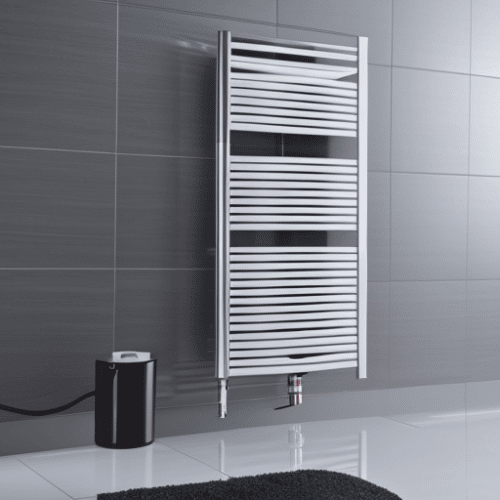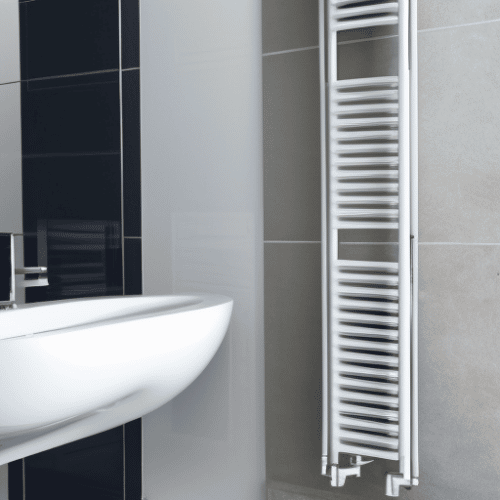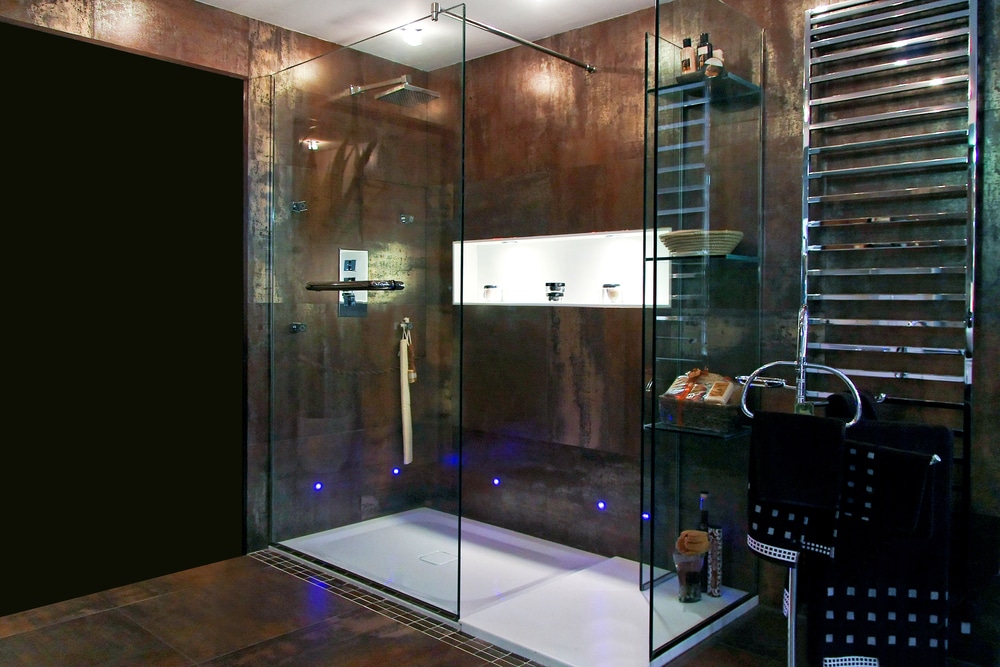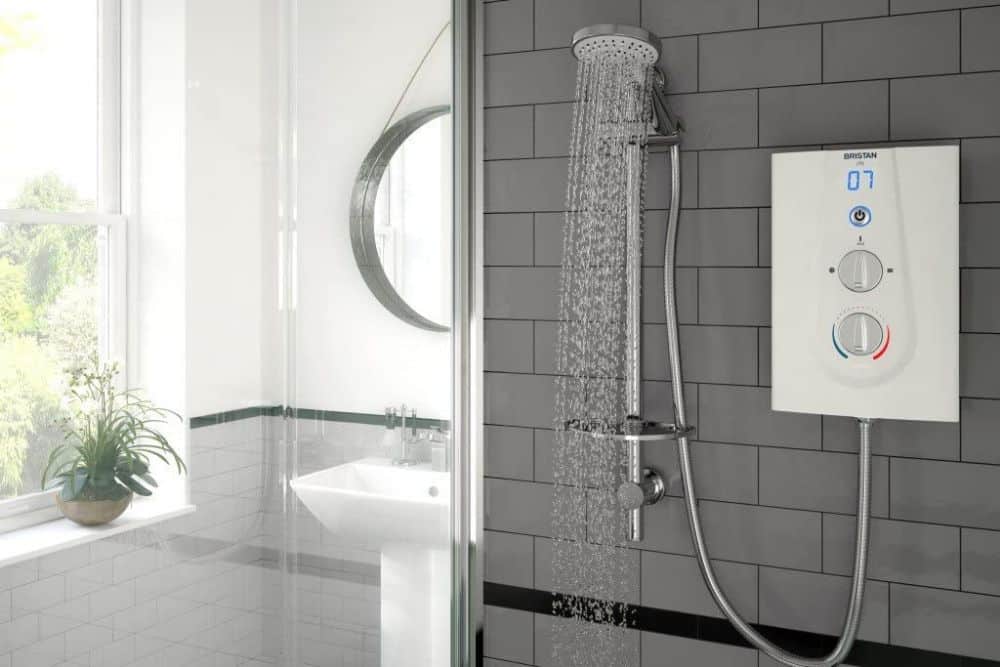Last Updated on
Are you in the market for a bathroom heater? Don’t let yourself get burned by not knowing about the regulations for bathroom heaters in the UK. We’ll provide an overview of what you need to know, from the types of heaters allowed in a bathroom to installation and maintenance tips. So whether you’re looking for extra warmth or just want to stay up-to-date on safety standards, read on. With our helpful guide and advice, your knowledge about bathroom heater regulations in the UK will be hot stuff!
Table of Contents:
- What are the Regulations for Bathroom Heaters in the UK?
- Types of Heaters Allowed in Bathrooms
- Installation Requirements for Bathroom Heaters
- Maintenance Tips for Bathroom Heaters
- The Benefits of Installing a Bathroom Heater
- FAQs in Relation to Bathroom Heater Regulations in the Uk
- Conclusion
What Are the Regulations for Bathroom Heaters in the UK?
The UK has strict regulations in place when it comes to bathroom heaters. It is important that these are followed, as they are designed to ensure the safety of users and protect them from potential hazards.
Safety Standards
When it comes to bathroom heaters, there are a number of safety standards that must be met before they can be sold or installed in the UK. These include CE marking for electrical products, which ensures that all electrical components meet certain quality and performance requirements; IP ratings, which measure how well an appliance is protected against water ingress; and EN 60335-2-52 testing, which tests the safe operation of electric appliances, including electric heaters.
Installation Requirements
In addition to meeting safety standards, any bathroom heater installed in the UK must also comply with building regulations set out by local authorities. This includes ensuring adequate ventilation is provided so that moisture does not build up within the room and making sure any wiring used meets current regulations for electrical installations. All installation work should only be carried out by qualified professionals who have experience working with this type of equipment.
Maintenance Requirements
By following these steps regularly, you can ensure that your bathroom heater remains safe and efficient throughout its lifetime. Checking for signs of wear or damage, cleaning away dust or debris from around vents or filters, and replacing air filters regularly (if applicable) are all important maintenance tasks to undertake. Additionally, having an annual service carried out by a qualified professional is recommended whenever possible.
It is essential to be aware of the regulations for bathroom heaters in the UK before purchasing one, so you can make sure that it meets safety standards. Now let’s take a look at the different types of heaters allowed in bathrooms.
Types of Heaters Allowed in Bathrooms
When it comes to heating a bathroom, there are several options available. The most common types of heaters used in bathrooms are electric and gas models.

Electric Heaters: Electric heaters provide an efficient way to warm up a bathroom quickly. They come in many shapes and sizes, from wall-mounted panels to free-standing units with fans for circulating the air. Most electric heaters use convection technology, which heats the air around them rather than directly heating objects or people in the room. This type of heater is generally safe and easy to install but can be more expensive than other options due to its energy consumption.
Gas Heaters: Gas heaters are also popular choices for bathrooms as they offer fast warmth without using electricity. These typically require professional installation as they need proper ventilation systems installed along with them in order to operate safely and efficiently. Gas heaters can be powered by natural gas or propane, depending on what’s available locally and what type of connection you have at home (e.g., piped gas).
Oil-Filled Radiators: Oil-filled radiators are another option that doesn’t require any kind of fuel source or external power supply; instead, these units contain oil that’s heated up when plugged into an electrical outlet – similar to how a kettle works! These tend to take longer than other types of heaters, but once warmed up will keep your bathroom cosy for hours on end without having any additional running costs after purchase (aside from electricity usage).
It is also worth noting that some local authorities may have regulations regarding certain types of heating being allowed within bathrooms, so make sure to check this out before purchasing anything. Ultimately, it is important to consider each type of heater carefully before deciding which one is best suited for your needs both now and in the future.
Installation Requirements for Bathroom Heaters
Before installing a bathroom heater, you should be aware of the regulations and requirements for doing so in the UK.
The first step is obtaining any necessary permits or inspections from local authorities. Depending on where you live, this may include building control approval or an electrical installation certificate (EIC). It’s also important to check that the type of heater you plan to install is allowed in bathrooms according to local regulations.
A bathroom heater must be placed at least 2 meters away from any water sources, such as showers and baths. This helps reduce the risk of electric shock if there is ever a leak or spill near the heater. Additionally, all wiring should be installed by a qualified electrician who will ensure that everything meets safety standards and complies with relevant regulations.
It’s also important to consider ventilation, as these appliances generate heat which needs somewhere to escape safely without causing dampness or condensation problems in other parts of your home. If possible, try positioning your new unit close enough to an existing window so air can circulate freely around it but far enough away not to cause drafts over surfaces like sinks and toilets.
Finally, once your new unit has been installed correctly by a professional electrician, ensure you regularly maintain it according to manufacturer instructions. This includes cleaning filters regularly, checking that thermostats are working properly, and testing switches. Regular maintenance will help ensure safe operation throughout its lifetime.
It’s important to adhere to the installation requirements for bathroom heaters to ensure safe and efficient use. Now let’s look at some maintenance tips for these heating devices.
Maintenance Tips for Bathroom Heaters
Maintaining your bathroom heater is necessary to ensure it is working safely and efficiently. Here are some tips on how to keep it in top condition.
Cleaning: Regularly dust off the exterior of the heater with a damp cloth or vacuum cleaner attachment. Make sure you don’t use any harsh chemicals, as this could damage the finish of the appliance. If there are any removable parts, such as grills or filters, make sure they’re cleaned regularly too.
Check for Wear and Tear: Inspect all wiring connections and plugs for signs of wear and tear every few months, ensuring everything looks secure and intact. Also, check that all screws are tight so nothing can come loose over time.
Replace Parts: Replace air filters at least once a year (or more often if needed). This will help improve air quality by trapping dust particles before they enter your home’s ventilation system, which can cause allergies or other health problems over time. It’s also important to replace any worn-out parts, such as heating elements or fan blades, when necessary – this will help keep your unit running smoothly without interruption from breakdowns due to faulty components.
Test Safety Features: Test safety features like automatic shut-off switches periodically. These should be checked at least once a year but more frequently if possible, especially after major storms or power outages where surges may have occurred in electricity supply lines leading into your home.
By following these simple maintenance tips, you can enjoy safe and efficient operation of your bathroom heater for many years.
The Benefits of Installing a Bathroom Heater
Heaters are available in a variety of styles, from wall-mounted units to electric radiators, so you’ll have plenty of options when it comes to finding the right fit for your space. Here are some of the benefits that come with installing a bathroom heater:
Improved Comfort: A bathroom heater will help keep the air warm and comfortable during cold winter months or after taking a shower on chilly days. This is especially beneficial if you live in an area where temperatures drop significantly at night. Additionally, having heated air circulating throughout your home can help reduce humidity levels and prevent mould growth.
Energy Efficiency: Installing a bathroom heater can also save you money on energy bills by providing heat without using up too much electricity or gas. Electric radiators are particularly efficient as they use convection currents to circulate hot air around the room without wasting energy like traditional heating systems. Plus, many modern models come with adjustable thermostats so you can control how much heat is produced at any given time.
Safety Features: Bathroom heaters often come equipped with safety features such as overheat protection which prevents them from becoming too hot and causing fires or burns. They may also include anti-frost settings, which allow them to automatically switch off when temperatures dip below freezing point – this helps protect pipes from bursting due to ice build-up inside them during winter months!
Easy Installation & Maintenance: Most bathroom heaters are relatively easy to install and require minimal maintenance once set up correctly – just make sure that all wiring connections are secure before turning it on! Additionally, most models don’t need regular servicing apart from occasional dusting or cleaning depending on their type (e.g., oil-filled radiator).
Overall, installing a bathroom heater is an effective way of improving comfort while saving money on energy bills at the same time due to its efficient design and safety features. It is easy enough for anyone who knows basic DIY skills to install.
FAQs in Relation to Bathroom Heater Regulations in the UK
What type of room heater is allowed in a bathroom?

In the UK, it is not recommended to use any electric room heater in a bathroom due to the risk of electric shock. That said, check the IP rating of your appliance – a minimum of IPX4 means that it can resist water splashes. An oil-filled radiator is one of the most secure electric options for heating a bathroom. These appliances are safe and effective that can be used without worry, as their heating elements are covered and protected by the metal body. They may take longer to heat up, but they offer more consistent heat over time. Make sure your appliance meets all safety standards, and don’t position it too close to your bathtub or sink.
Can an IP24 heater be used in a bathroom?
Yes, an IP24 heater can be used in a bathroom. However, ensure that the room is well-ventilated and that all safety precautions are taken when using any electrical appliance in a bathroom. It is also recommended to check with your local building regulations before installing any kind of heating system, as there may be additional requirements for bathrooms. Additionally, make sure to follow the manufacturer’s instructions carefully when setting up and using the heater.
Are storage heaters allowed in bathrooms?
Storage heaters can be a fire hazard due to the high humidity levels and lack of ventilation present in bathrooms. Additionally, they require adequate air circulation around them to work efficiently, which is difficult to achieve in such a confined space as a bathroom. If your appliance has a suitable IP rating, you can use it in your bathroom.
Conclusion
When it comes to bathroom heater regulations in the UK, there are a few things to keep in mind. Firstly, choose the right type of heater for your bathroom and follow all installation requirements. Regular maintenance is also essential for ensuring that your appliance remains safe and efficient. With these tips in mind, you can enjoy the benefits of having a warm and comfortable bathroom without worrying about any potential risks or dangers associated with improper use of heaters.
Are you looking for the best way to stay safe and warm in your bathroom? Do you want to ensure that your home is up-to-date with all of the latest regulations on heating systems? Look no further than Homes Whiz! Our blog provides detailed reviews, guides, and information about different types of bathroom heaters available in the UK. We’ll help you make sure that you’re always compliant with safety standards while enjoying a comfortable temperature throughout your house.
Paul is the type of person who never met a problem he couldn’t fix. He can always be found tinkering with something in his house, even if it isn’t broken! His tips and tricks are often shared on our site. He’s the one you call when something breaks because he has been known to improvise fixes for everything from leaky faucets to malfunctioning dryers.



